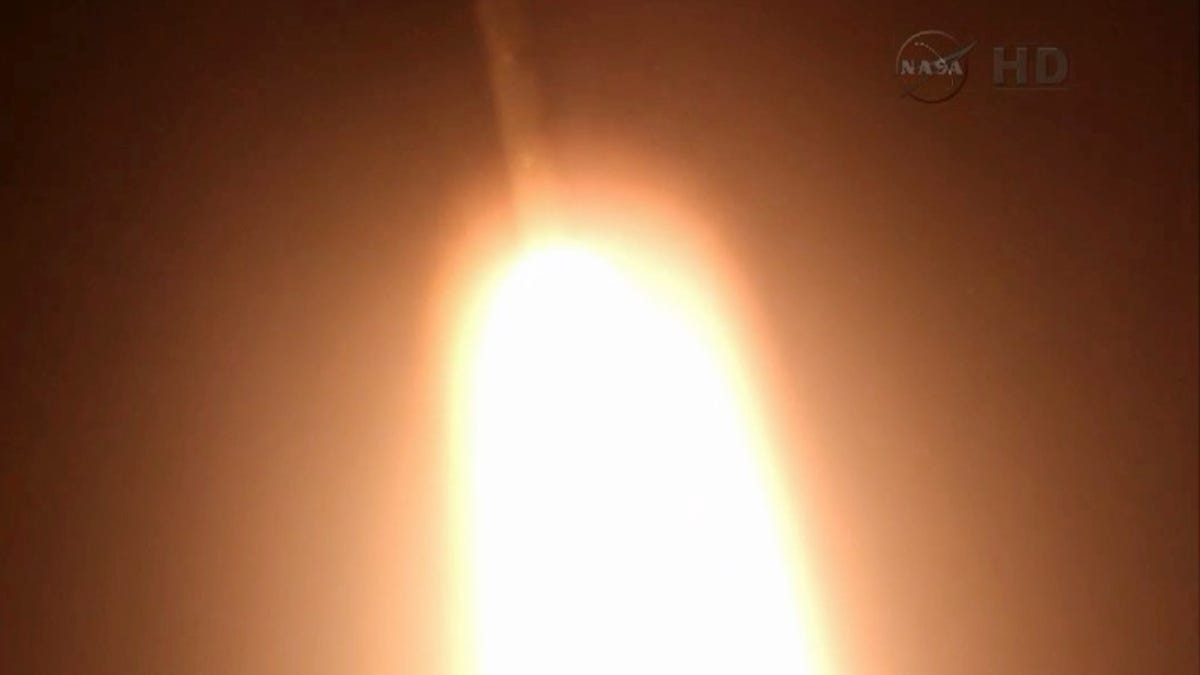NASA probe takes off to solve moon dust mystery
What was responsible for the eerie lunar glow reported by the crew of Apollo 17? The LADEE probe is on its way to the moon to find out.

There's a bizarre glow on the moon and scientists have launched a probe to figure out what it is.
A Minotaur V rocket roared into the skies above Virginia late Friday carrying the super sleuth robot, NASA's Lunar Atmosphere and Dust Environment Explorer (LADEE), which will examine the moon's infinitesimal atmosphere and dust.
The $280 million mission began with a textbook launch, visible to millions along the East Coast, as the probe was carried aloft at 11:27 p.m. ET from Pad 0B at NASA's Wallops Flight Facility on Wallops Island, Va.
It marks the first use of Wallops Island for a moonshot, as well as the debut mission for Orbital Sciences' Minotaur V booster.
The lunar orbiter will investigate a mystery that has puzzled scientists for decades. The crew of Apollo 17, the last astronauts to visit the moon, reported a strange glow on the moon's horizon. Astronauts on Apollo 8, 10, and 15 noticed similar rays, and the phenomenon is puzzling because the airless satellite lacks enough atmosphere to reflect sunlight.
Tiny particles of dust rising high in the moon's thin atmosphere, similar to Earth's crepuscular rays and perhaps electrically charged by ultraviolet light, could have been responsible for the "streamers" of light spotted by astronauts just before lunar sunrise or sunset. The LADEE (pronounced like "laddie") mission will examine that possibility.
It will also learn more about the very tenuous atmosphere itself, which is believed to have atoms and molecules such as neon, ammonia, methane, carbon dioxide, sodium, potassium, and possibly others. The "surface boundary exosphere" they move in may characterize the molecular veils around larger asteroids and moons and could be the solar system's most common type of atmosphere.
Designed, built, and managed by NASA's Ames Research Center in Silicon Valley, the LADEE probe itself is a compact spacecraft about the size of a small car and weighs 844 pounds.
Its instrument array and experiments include the Ultraviolet and Visible Light Spectrometer, which will analyze light on the moon to determine the composition of the atmosphere, the Lunar Dust Experiment to capture and check out dust particles, and a Neutral Mass Spectrometer to measure atmospheric variations over multiple orbits.
In an aside from the mission's main objectives, LADEE will also use its Lunar Laser Communications Demonstration to test out lasers instead of radio waves for establishing broadband communication speeds with Earth, a communication method that NASA hopes to use on future missions.
Following the launch, LADEE will circle the Earth several times before firing its main rocket and heading toward the moon, where it should arrive in about 25 days.
Following a 30-day checkout phase, it will begin about 100 days of scientific work gathering data on the tenuous atmosphere.
The probe's orbit will vary from 20-60 kilometers (12-37 miles) due to the moon's "lumpy" gravity field, according to NASA.
LADEE's mission is a one-way trip. When its fuel runs out, it will be remotely piloted to crash-land into the moon.
Check out more pics of LADEE in the gallery above, and further details at the NASA mission page.
Good luck, laddie!

